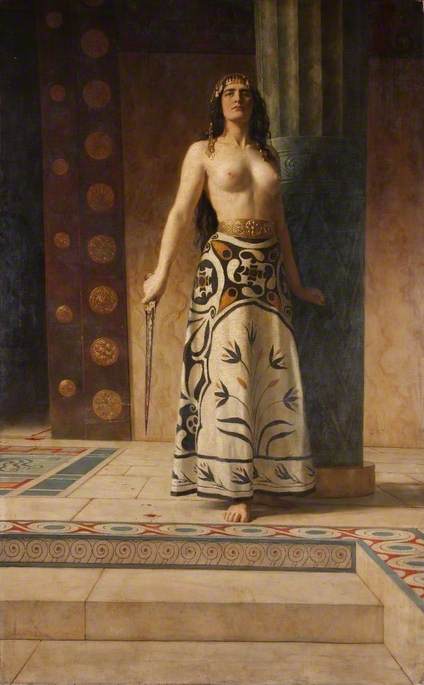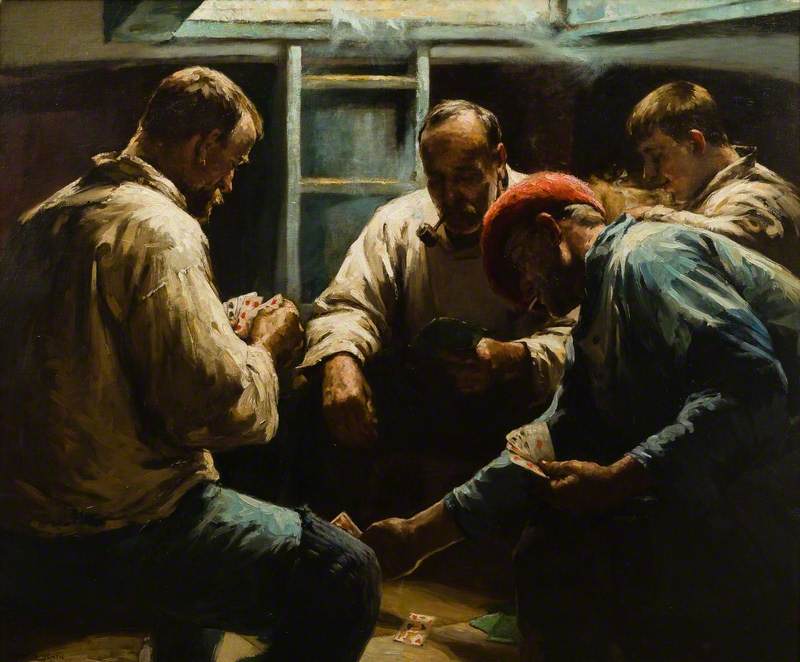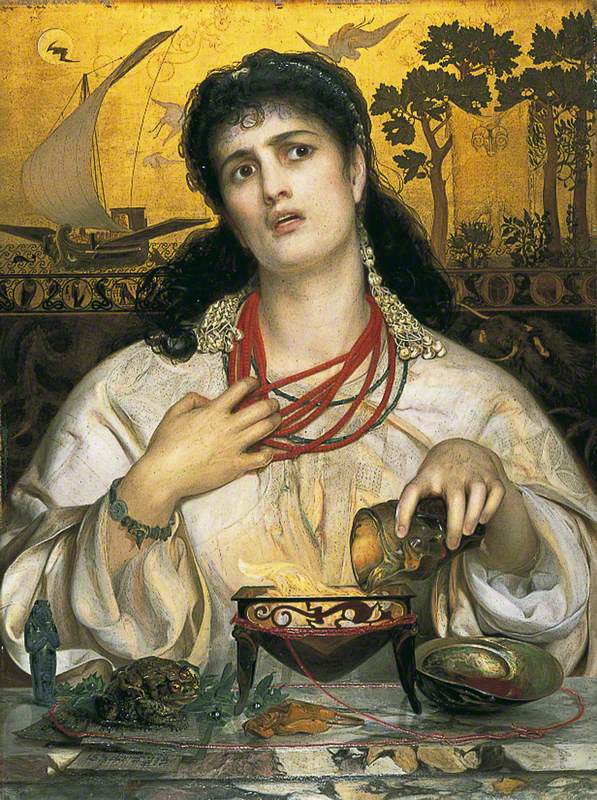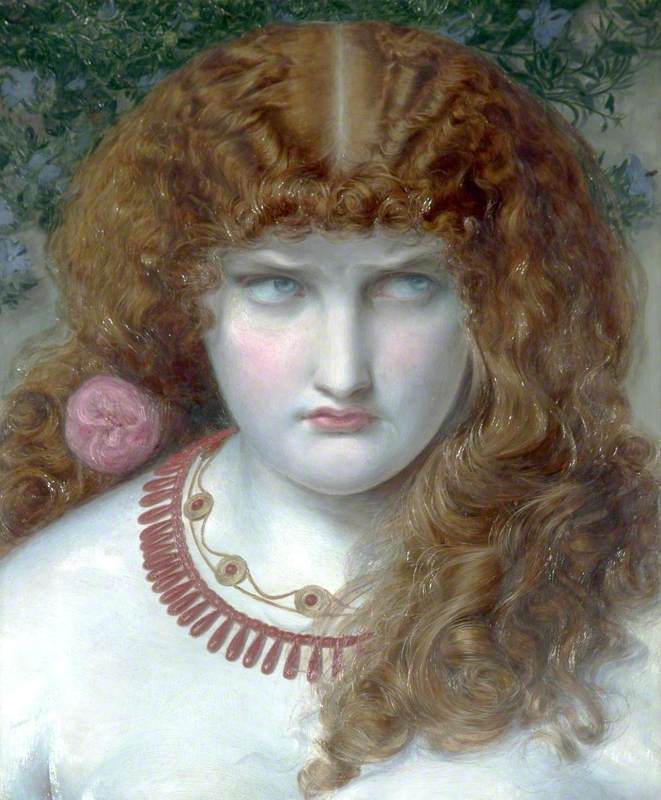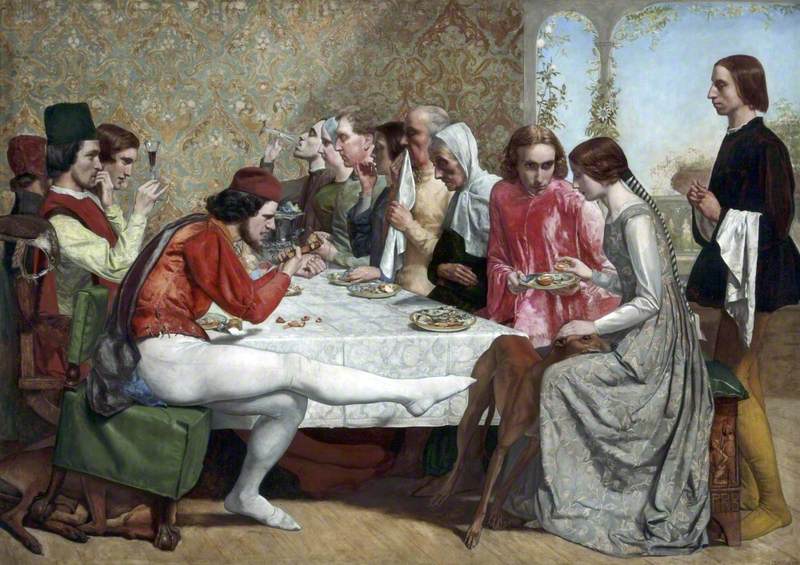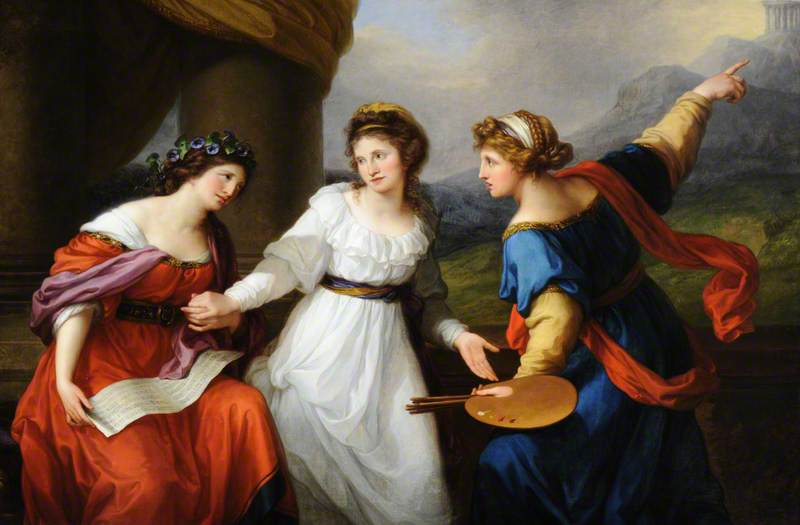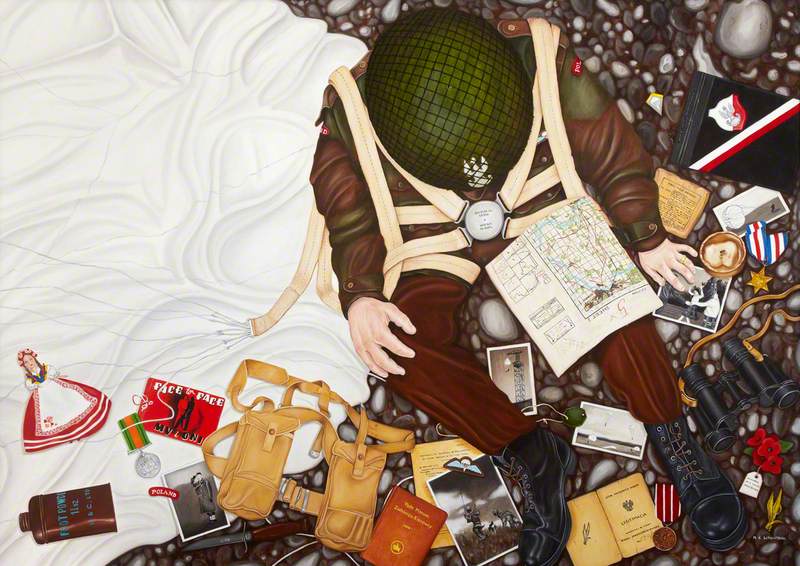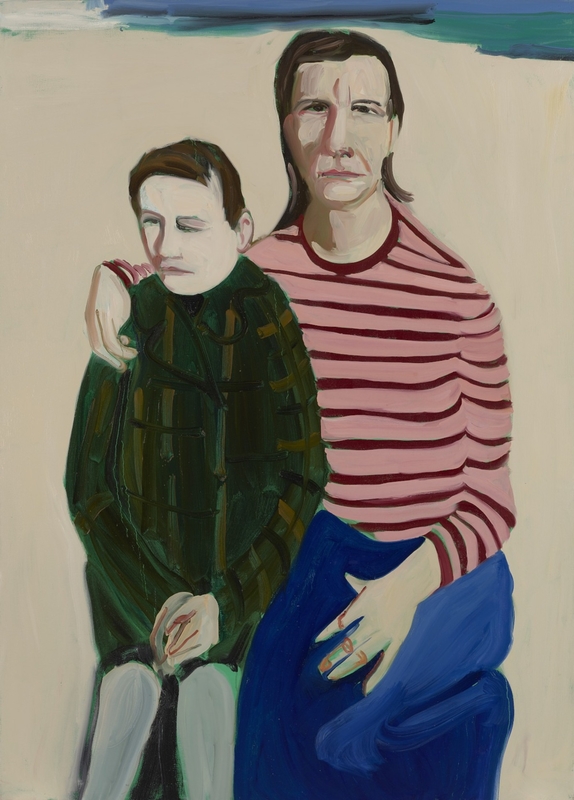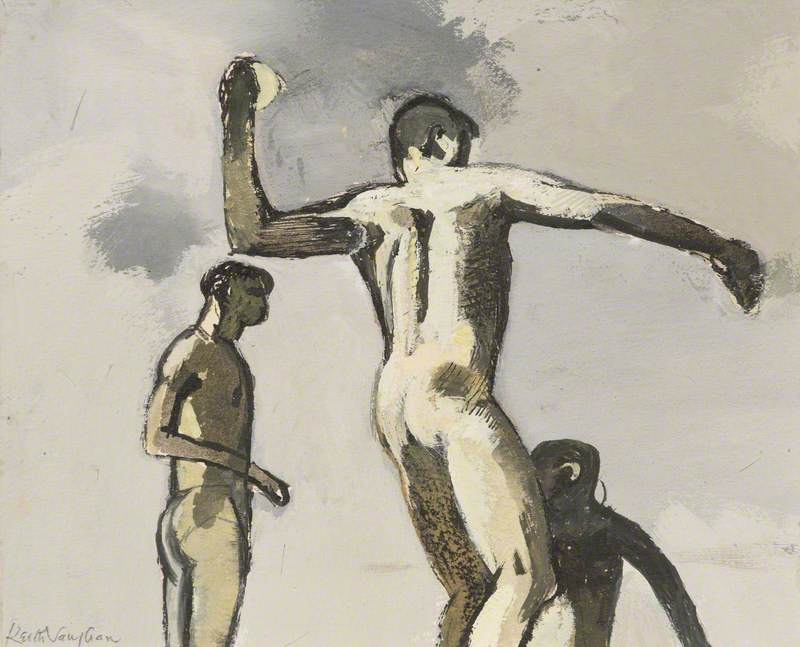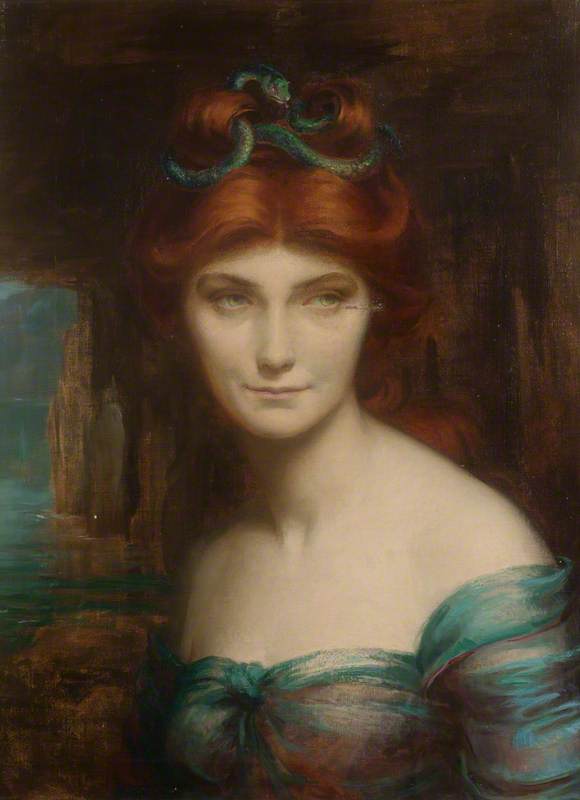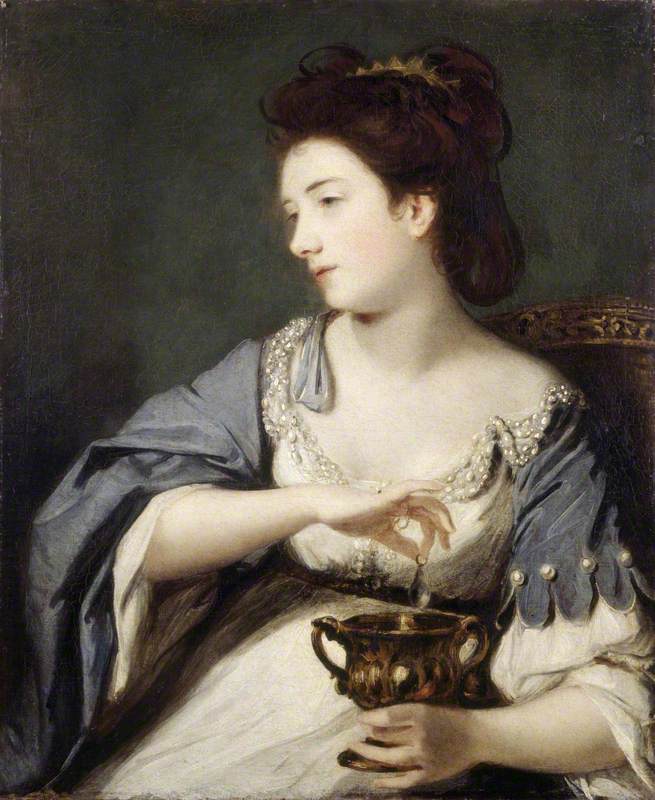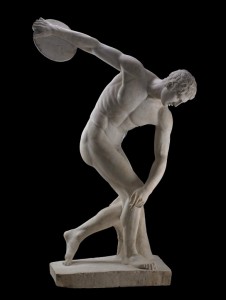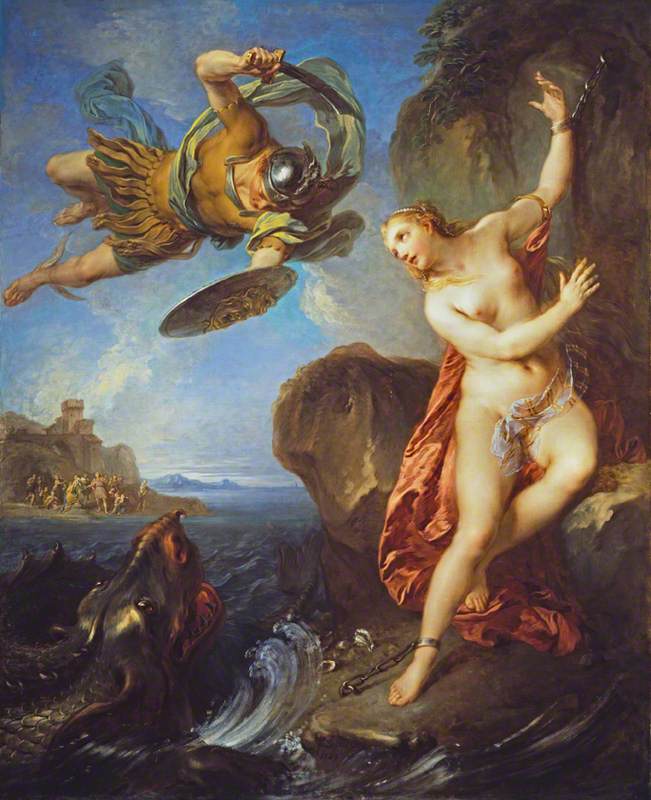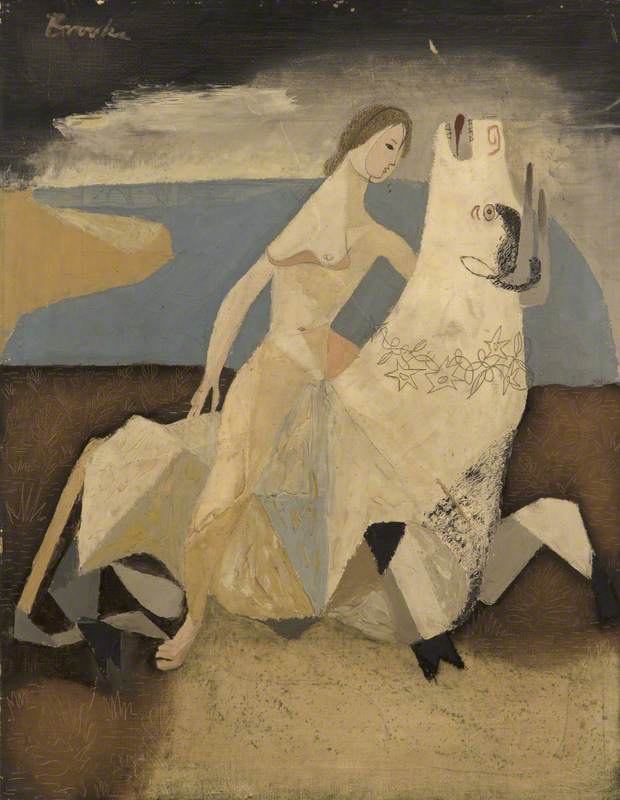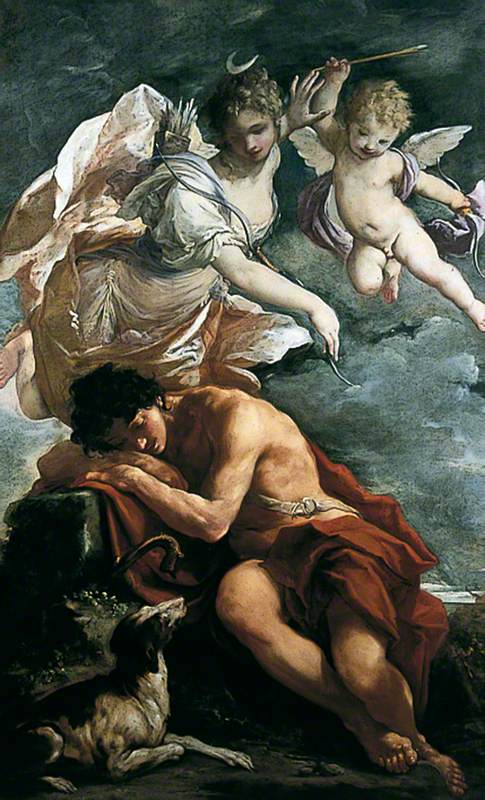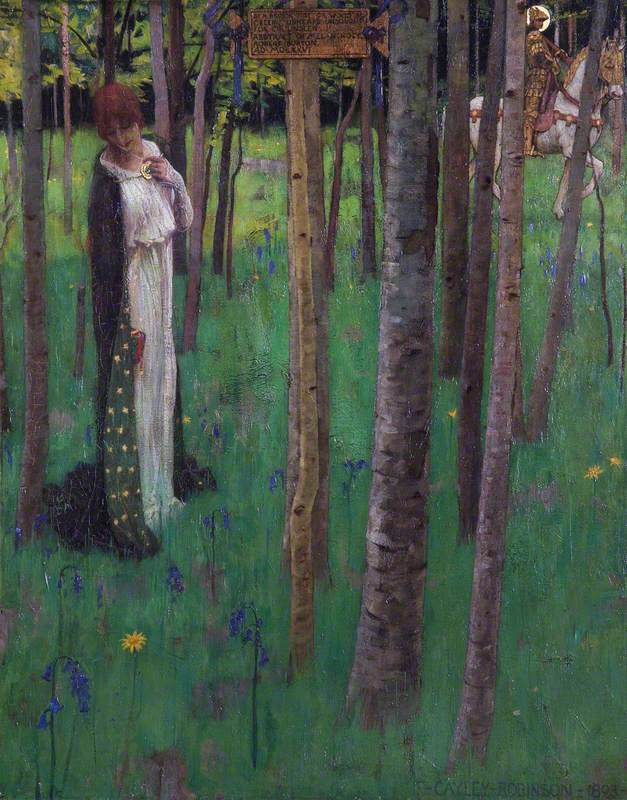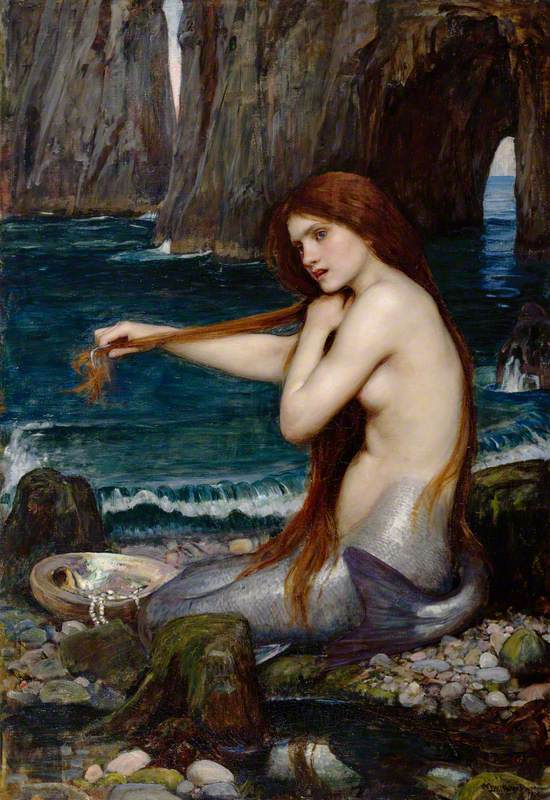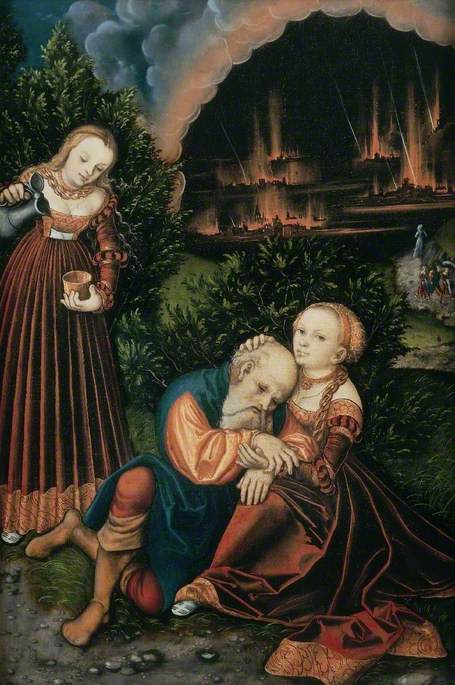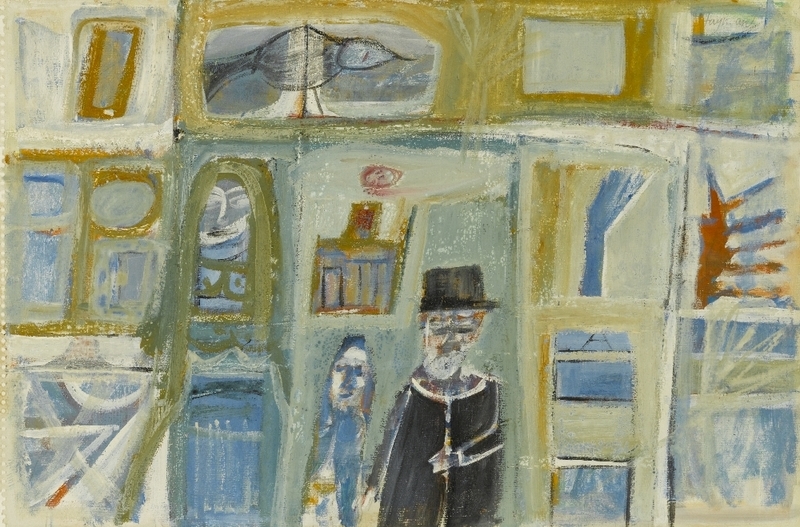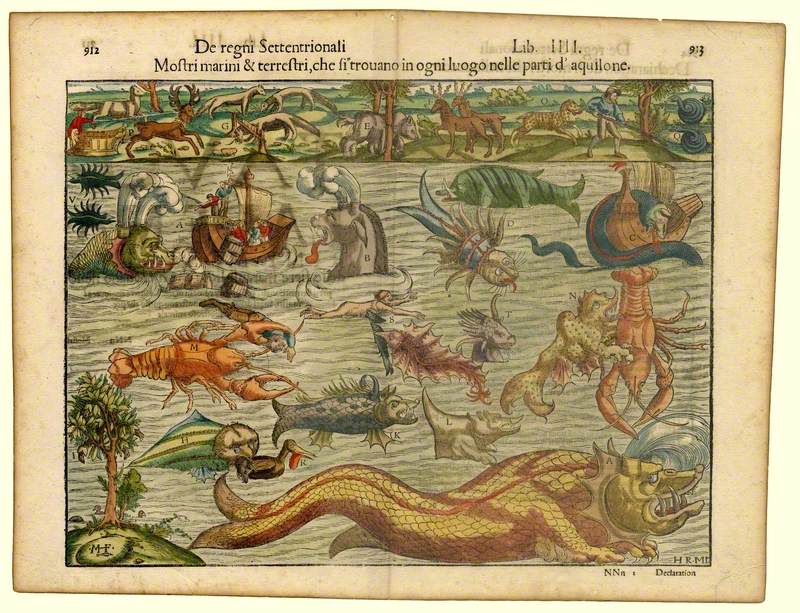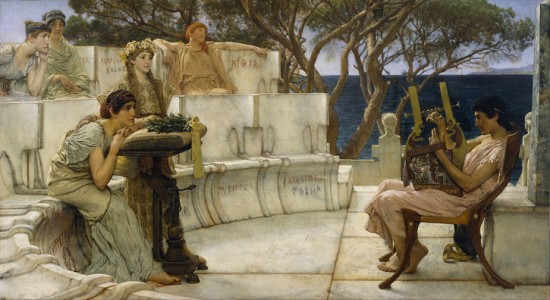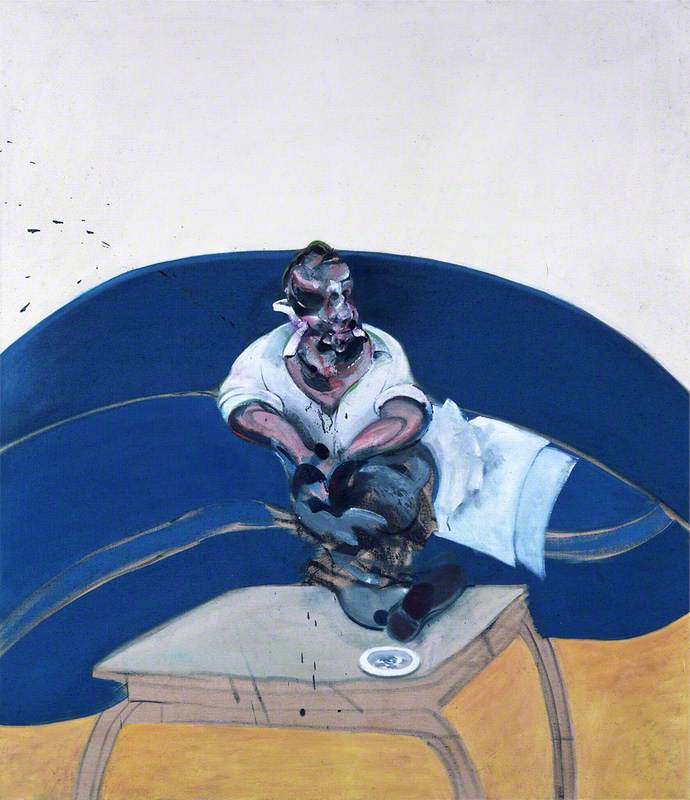Worcester City Museums' Clytemnestra portrait by the Pre-Raphaelite painter John Collier illuminates one of the most enduring of the Greek myths. In order to appease the goddess Artemis and secure favourable passage as he embarked on his Trojan expedition, Agamemnon, king of Mycenae, sacrifices his daughter Iphigenia.
Her grief-stricken mother Clytemnestra was portrayed by Greek tragedians – and by artists for centuries afterwards – as implacable and vengeful, and Collier captures her in the moments following her murder of her husband.
She stands as if in a pregnant moment of fading yet powerful emotion, the only sign of movement the trail of blood leading the viewer's eye off-stage to the scene of her crime. (She stabbed her husband as he was taking a bath.) The emotion of Collier's subject is an ironic parallel to the wild and unpitying wrath of Artemis, the goddess of the hunt to whom Clytemnestra's daughter was sacrificed, and also captures something of the goddess's physicality. Her unclothed chest reminds us of her motherhood and the nature of her vengeance. It also serves as a portent of Clytemnestra's vulnerability, as she is herself murdered years later by her son Orestes.
At nearly two and a half metres in height, the painting is too large to navigate some of the doorways in Worcester City Art Gallery & Museum. And so, appropriate to the conflicting aspects of her character, Clytemnestra must first be removed from her frame and the two elements transported separately whenever she is moved.
It's likely that the painting, which was gifted to Worcester in 1939, was completed during the first year of the First World War, giving its themes of violence and justice added poignancy.
Kate Banner, Curatorial and Exhibitions Assistant, Museums Worcestershire
